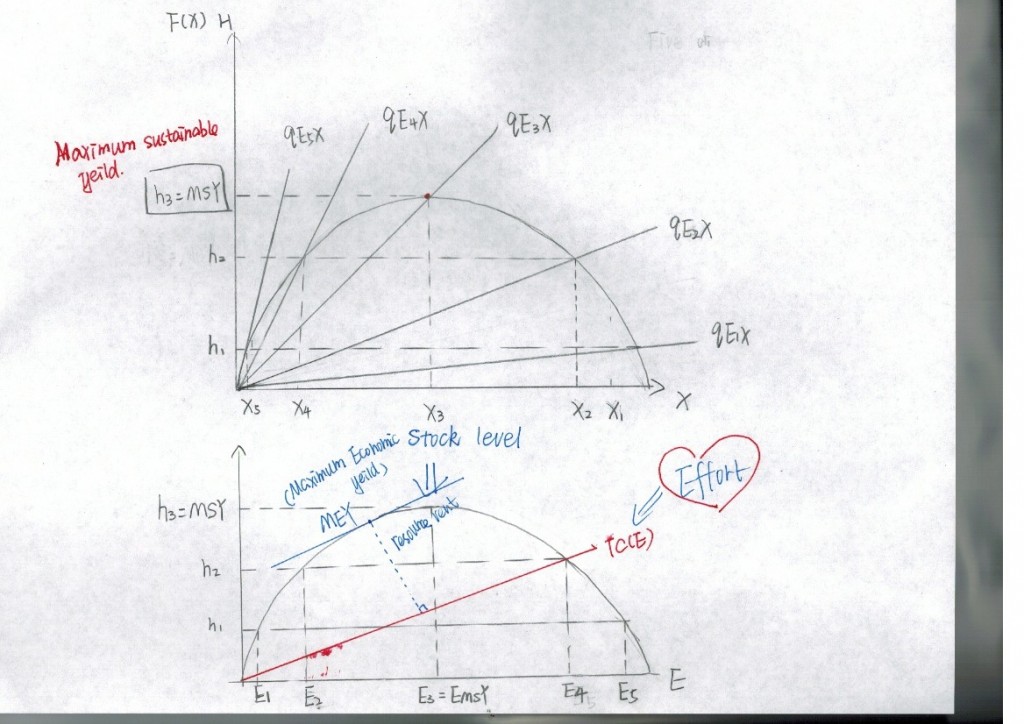Through this blog, I plan to add more information on Fisheries’ model. I feel that our prof. spent more time on this topic. I believe that it worth learning more information about it.
I want to start from the basic concepts.
Maybe because I am an international student, when I heard the work ‘Fish Stock”, I understood it as fishers stock fish. However, Here ‘Fish Stock ‘ could be interpreted as a population of a fish species that lives and is able to reproduce itself within a given geographical.
There are many factors can affect the fish stock. Based on what I learned from a journal, recruitment, natural mortality, individual growth and harvesting can lead to changes in fish stock. The formula can be represented as follows:
Stock change=Recruitment+ Individual growth-Natural mortality-Harvest. There are several inputs a fishing harvest firm should invest in such as fuel, bait, gear and labor. In our lecture we use effort as the fishing input.
In the following part, I will introduce two concepts: MSY (Maximum Sustainable Yield) and MEY (Maximum Economic Yeild). And also the diagrams below show short-run harvest for five different effort levels. For the smallest effort E1 the harvest curve crosses the growth curve for stock level X1 and harvest H1. Thus, a small effort – over a sufficiently long time to let the stock reach equilibrium – gives a high stock level and a relatively small catch. The same trick happened on E4 and E2. We can see that the highest possible harvest is reached for effort level E3 and this harvest is called MSY (maximum sustainable yield).
The stock-level & growth rate curve can be transformed into a sustainable harvest effort curve.Resource rent can be translated as the difference between total revenue and total cost for each effort level. This level can be achieved through MC=MR. The positive difference are maximized. At the same time we can find MEY(Maximum Economic yield).

